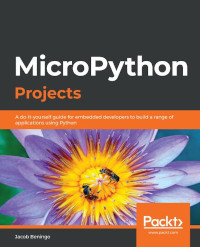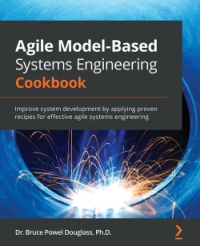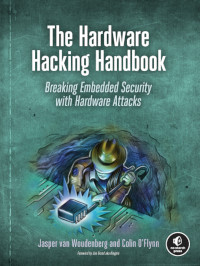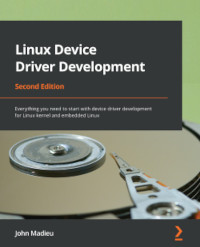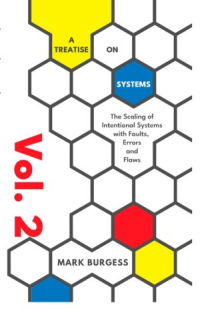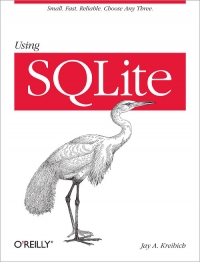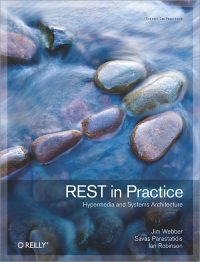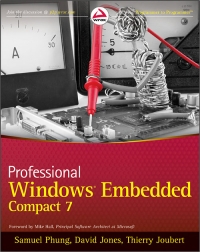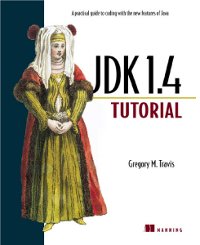MicroPython Projects
With the increasing complexity of embedded systems seen over the past few years, developers are looking for ways to manage them easily by solving problems without spending a lot of time on finding supported peripherals. MicroPython is an efficient and lean implementation of the Python 3 programming language, which is optimized to run on microcontrollers. MicroPython Projects will guide you in building and managing your embedded systems with ease. This book is a comprehensive project-based guide that will help you build a wide range of projects and give you the confidence to design complex projects spanning new areas of technology such as electronic applications, automation devices, and IoT applications. While building seven engaging projects, you'll learn how to enable devices to communicate with each other, access and control devices over a TCP/IP socket, and store and retrieve data. The complexity will increase progressively as you work on different projects, covering areas such a ...
With the increasing complexity of embedded systems seen over the past few years, developers are looking for ways to manage them easily by solving problems without spending a lot of time on finding supported peripherals. MicroPython is an efficient and lean implementation of the Python 3 programming language, which is optimized to run on microcontrollers. MicroPython Projects will guide you in building and managing your embedded systems with ease. This book is a comprehensive project-based guide that will help you build a wide range of projects and give you the confidence to design complex projects spanning new areas of technology such as electronic applications, automation devices, and IoT applications. While building seven engaging projects, you'll learn how to enable devices to communicate with each other, access and control devices over a TCP/IP socket, and store and retrieve data. The complexity will increase progressively as you work on different projects, covering areas such a ...
Patterns in the Machine
Discover how to apply software engineering patterns to develop more robust firmware faster than traditional embedded development approaches. In the authors' experience, traditional embedded software projects tend towards monolithic applications that are optimized for their target hardware platforms. This leads to software that is fragile in terms of extensibility and difficult to test without fully integrated software and hardware. Patterns in the Machine focuses on creating loosely coupled implementations that embrace both change and testability. This book illustrates how implementing continuous integration, automated unit testing, platform-independent code, and other best practices that are not typically implemented in the embedded systems world is not just feasible but also practical for today's embedded projects. After reading this book, you will have a better idea of how to structure your embedded software projects. You will recognize that while writing unit tests, creating ...
Discover how to apply software engineering patterns to develop more robust firmware faster than traditional embedded development approaches. In the authors' experience, traditional embedded software projects tend towards monolithic applications that are optimized for their target hardware platforms. This leads to software that is fragile in terms of extensibility and difficult to test without fully integrated software and hardware. Patterns in the Machine focuses on creating loosely coupled implementations that embrace both change and testability. This book illustrates how implementing continuous integration, automated unit testing, platform-independent code, and other best practices that are not typically implemented in the embedded systems world is not just feasible but also practical for today's embedded projects. After reading this book, you will have a better idea of how to structure your embedded software projects. You will recognize that while writing unit tests, creating ...
Agile Model-Based Systems Engineering Cookbook
Model-based systems engineering provides an integrated approach to creating verifiable models of engineering data, rather than relying on traditional and vague natural language descriptions that are difficult to verify. This enables you to work on accurate specifications and rapidly design reliable and effective products for the marketplace. Agile MBSE integrates the value proposition of agile methods in systems development, most notably, for managing constant change and uncertainty while continuously ensuring system correctness and meeting customers' needs. Written by Dr. Bruce Powel Douglass, a world-renowned expert in MBSE, this book will take you through important systems engineering workflows and show you how they can be performed effectively with an agile and model-based approach. You'll start by covering the key concepts of agile methods for systems engineering. The book then takes you through initiating a project, defining stakeholder needs, defining and analyzing system req ...
Model-based systems engineering provides an integrated approach to creating verifiable models of engineering data, rather than relying on traditional and vague natural language descriptions that are difficult to verify. This enables you to work on accurate specifications and rapidly design reliable and effective products for the marketplace. Agile MBSE integrates the value proposition of agile methods in systems development, most notably, for managing constant change and uncertainty while continuously ensuring system correctness and meeting customers' needs. Written by Dr. Bruce Powel Douglass, a world-renowned expert in MBSE, this book will take you through important systems engineering workflows and show you how they can be performed effectively with an agile and model-based approach. You'll start by covering the key concepts of agile methods for systems engineering. The book then takes you through initiating a project, defining stakeholder needs, defining and analyzing system req ...
The Hardware Hacking Handbook
Embedded devices are chip-size microcomputers small enough to be included in the structure of the object they control, and they're everywhere - in phones, cars, credit cards, laptops, medical equipment, even critical infrastructure. This means understanding their security is critical. The Hardware Hacking Handbook takes you deep inside different types of embedded systems, revealing the designs, components, security limits, and reverse-engineering challenges you need to know for executing effective hardware attacks. Written with wit and infused with hands-on lab experiments, this handbook puts you in the role of an attacker interested in breaking security to do good. Starting with a crash course on the architecture of embedded devices, threat modeling, and attack trees, you'll go on to explore hardware interfaces, ports and communication protocols, electrical signaling, tips for analyzing firmware images, and more. Along the way, you'll use a home testing lab to perform fault-injecti ...
Embedded devices are chip-size microcomputers small enough to be included in the structure of the object they control, and they're everywhere - in phones, cars, credit cards, laptops, medical equipment, even critical infrastructure. This means understanding their security is critical. The Hardware Hacking Handbook takes you deep inside different types of embedded systems, revealing the designs, components, security limits, and reverse-engineering challenges you need to know for executing effective hardware attacks. Written with wit and infused with hands-on lab experiments, this handbook puts you in the role of an attacker interested in breaking security to do good. Starting with a crash course on the architecture of embedded devices, threat modeling, and attack trees, you'll go on to explore hardware interfaces, ports and communication protocols, electrical signaling, tips for analyzing firmware images, and more. Along the way, you'll use a home testing lab to perform fault-injecti ...
Linux Device Driver Development, 2nd Edition
Linux is by far the most-used kernel on embedded systems. Thanks to its subsystems, the Linux kernel supports almost all of the application fields in the industrial world. This updated second edition of Linux Device Driver Development is a comprehensive introduction to the Linux kernel world and the different subsystems that it is made of, and will be useful for embedded developers from any discipline. You'll learn how to configure, tailor, and build the Linux kernel. Filled with real-world examples, the book covers each of the most-used subsystems in the embedded domains such as GPIO, direct memory access, interrupt management, and I2C/SPI device drivers. This book will show you how Linux abstracts each device from a hardware point of view and how a device is bound to its driver(s). You'll also see how interrupts are propagated in the system as the book covers the interrupt processing mechanisms in-depth and describes every kernel structure and API involved. This new edition also a ...
Linux is by far the most-used kernel on embedded systems. Thanks to its subsystems, the Linux kernel supports almost all of the application fields in the industrial world. This updated second edition of Linux Device Driver Development is a comprehensive introduction to the Linux kernel world and the different subsystems that it is made of, and will be useful for embedded developers from any discipline. You'll learn how to configure, tailor, and build the Linux kernel. Filled with real-world examples, the book covers each of the most-used subsystems in the embedded domains such as GPIO, direct memory access, interrupt management, and I2C/SPI device drivers. This book will show you how Linux abstracts each device from a hardware point of view and how a device is bound to its driver(s). You'll also see how interrupts are propagated in the system as the book covers the interrupt processing mechanisms in-depth and describes every kernel structure and API involved. This new edition also a ...
A Treatise on Systems (volume 2)
This 2d volume describes the systematic application of Promise Theory to systems, representing a significant step forward in describing functional systems with both dynamics and semantics. By combining quantitative and qualitative descriptions in a single framework, Promise Theory provides the first impartial language for multiscale system phenomena. The closer one is the intrinsic scale of a system component, the more its qualitative semantics dominate its behaviour. As one scales out to large numbers, dynamical patterns dominate the average behaviours.This book serves as guide to graduate students and researchers in the development of a new science of systems, and contains an outstanding number of examples and lessons accumulated over ten years of working in the field, unified by a single theoretical Promise Theoretic model. ...
This 2d volume describes the systematic application of Promise Theory to systems, representing a significant step forward in describing functional systems with both dynamics and semantics. By combining quantitative and qualitative descriptions in a single framework, Promise Theory provides the first impartial language for multiscale system phenomena. The closer one is the intrinsic scale of a system component, the more its qualitative semantics dominate its behaviour. As one scales out to large numbers, dynamical patterns dominate the average behaviours.This book serves as guide to graduate students and researchers in the development of a new science of systems, and contains an outstanding number of examples and lessons accumulated over ten years of working in the field, unified by a single theoretical Promise Theoretic model. ...
Using SQLite
You can build database-backed applications for the desktop, Web, embedded systems, or operating systems without linking to heavy-duty client-server databases such as Oracle and MySQL. This book shows you how to use SQLite, a small and lightweight relational database engine that you can build directly into your application. With SQLite, you'll discover how to develop a database-backed application that remains manageable in size and complexity. Using SQLite guides you every step of the way. ...
You can build database-backed applications for the desktop, Web, embedded systems, or operating systems without linking to heavy-duty client-server databases such as Oracle and MySQL. This book shows you how to use SQLite, a small and lightweight relational database engine that you can build directly into your application. With SQLite, you'll discover how to develop a database-backed application that remains manageable in size and complexity. Using SQLite guides you every step of the way. ...
REST in Practice
Why don't typical enterprise projects go as smoothly as projects you develop for the Web? Does the REST architectural style really present a viable alternative for building distributed systems and enterprise-class applications? In this insightful book, three SOA experts provide a down-to-earth explanation of REST and demonstrate how you can develop simple and elegant distributed hypermedia systems by applying the Web's guiding principles to common enterprise computing problems. You'll learn techniques for implementing specific Web technologies and patterns to solve the needs of a typical company as it grows from modest beginnings to become a global enterprise. ...
Why don't typical enterprise projects go as smoothly as projects you develop for the Web? Does the REST architectural style really present a viable alternative for building distributed systems and enterprise-class applications? In this insightful book, three SOA experts provide a down-to-earth explanation of REST and demonstrate how you can develop simple and elegant distributed hypermedia systems by applying the Web's guiding principles to common enterprise computing problems. You'll learn techniques for implementing specific Web technologies and patterns to solve the needs of a typical company as it grows from modest beginnings to become a global enterprise. ...
Professional Windows Embedded Compact 7
Written by a team of experienced experts in the field, this in-depth resource provides you with invaluable information about the compact, scalable operating system, Windows Embedded Compact 7 (WEC7). The authors explore why Compact 7 is considered to be one of the best options for developing highly efficient, real-time applications using native code to access low-level system resources and hardware. After a general overview of the Windows Embedded Compact operating system, the authors walk you through OS design, debugging and debugging tools, application and driver development using Visual Studio, system registry, and much more. Finally, helpful sample projects and exercises aim to get you started performing a variety of development tasks immediately. ...
Written by a team of experienced experts in the field, this in-depth resource provides you with invaluable information about the compact, scalable operating system, Windows Embedded Compact 7 (WEC7). The authors explore why Compact 7 is considered to be one of the best options for developing highly efficient, real-time applications using native code to access low-level system resources and hardware. After a general overview of the Windows Embedded Compact operating system, the authors walk you through OS design, debugging and debugging tools, application and driver development using Visual Studio, system registry, and much more. Finally, helpful sample projects and exercises aim to get you started performing a variety of development tasks immediately. ...
JDK 1.4 Tutorial
Java is a success. It is now used across the programming landscape, from embedded devices to enterprise-class distributed systems. As Java's use increases, the pressure grows for it to expand to meet the diverse needs of the developer communities. The latest edition of Java, JDK 1.4 (or J2SE 1.4), includes new features like a new I/O system, a persistent preferences framework, Java Web Start, and Java regular expressions. ...
Java is a success. It is now used across the programming landscape, from embedded devices to enterprise-class distributed systems. As Java's use increases, the pressure grows for it to expand to meet the diverse needs of the developer communities. The latest edition of Java, JDK 1.4 (or J2SE 1.4), includes new features like a new I/O system, a persistent preferences framework, Java Web Start, and Java regular expressions. ...
